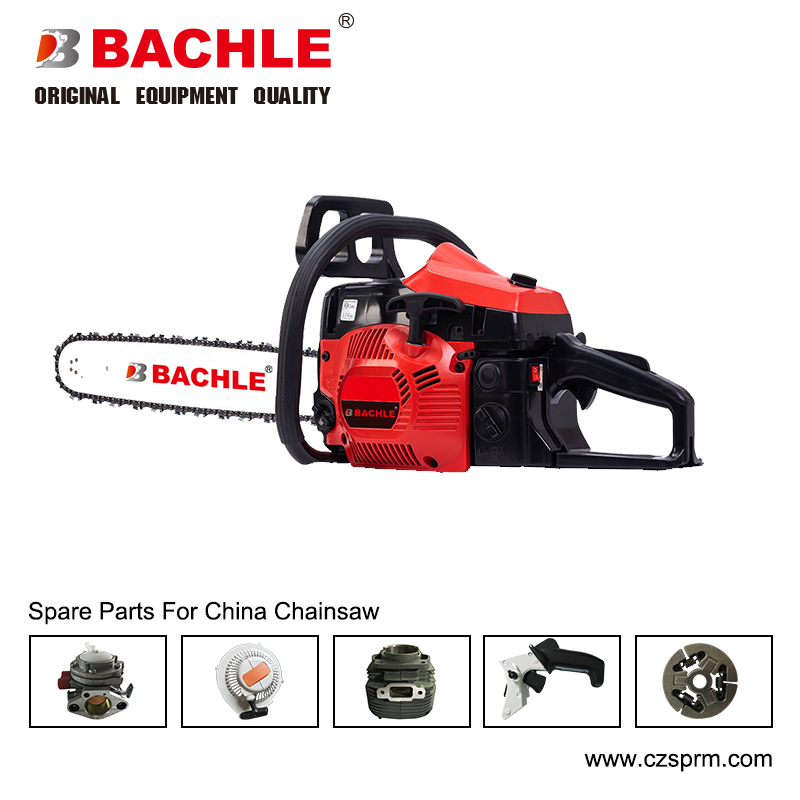Electric chainsaws have become a popular choice for both professionals and DIY enthusiasts due to their convenience, ease of use, and environmental friendliness. Understanding the various parts of an electric chainsaw is essential for safe and efficient operation. Let's delve into the anatomy of an electric chainsaw and explore the functions of each component.

What Are the Parts of an Electric Chainsaw?
1. Motor:
At the heart of an electric chainsaw is the motor, which powers the cutting chain. Electric chainsaws typically feature either a corded or cordless motor, with cordless models powered by rechargeable batteries. The motor's power output determines the cutting capacity of the chainsaw, ranging from light-duty to heavy-duty applications.
2. Guide Bar:
The guide bar is a long, straight metal bar that serves as the track for the cutting chain. It provides stability and support for the chain during operation and determines the maximum cutting depth of the chainsaw. Guide bars come in various lengths to accommodate different cutting tasks, ranging from pruning to felling large trees.
3. Cutting Chain:
The cutting chain consists of a series of interconnected metal links with sharp cutting teeth. It wraps around the guide bar and is driven by the motor to make cuts through wood. The chain's pitch, gauge, and number of drive links determine its compatibility with the chainsaw and its cutting performance.
4. Tensioning Mechanism:
Maintaining proper chain tension is essential for safe and efficient cutting. Electric chainsaws feature a tensioning mechanism that allows users to adjust the tension of the cutting chain easily. This ensures that the chain remains snug against the guide bar, reducing the risk of kickback and premature wear.
5. Chain Brake:
The chain brake is a safety feature designed to stop the cutting chain in the event of kickback or other unexpected movements. It can be activated manually by the operator or automatically in response to sudden movements or excessive force. The chain brake helps prevent accidents and injuries by quickly halting the chain's rotation.
6. Trigger Switch:
The trigger switch is the primary control mechanism for operating the chainsaw. Located on the rear handle, it activates the motor when pressed and releases it when released. Some electric chainsaws feature variable-speed triggers that allow users to adjust the motor's speed for different cutting tasks.
7. Front Handle:
The front handle provides a secure grip and allows users to guide the chainsaw during operation. It is typically positioned near the guide bar and incorporates safety features such as handguards to protect the operator's hands from debris and contact with the cutting chain.
8. Rear Handle:
The rear handle provides additional support and control for the chainsaw. It is typically located behind the motor and trigger switch and features an ergonomic design for comfortable handling during extended use. The rear handle may also incorporate vibration-dampening features to reduce operator fatigue.
9. Oil Reservoir:
To ensure smooth operation and prolong the life of the cutting chain and guide bar, electric chainsaws require lubrication. The oil reservoir stores chain lubricant, which is automatically dispensed onto the cutting chain during operation. Regularly checking and refilling the oil reservoir is essential for maintaining optimal performance.
10. Chain Tensioning Knob:
The chain tensioning knob allows users to adjust the tension of the cutting chain quickly and easily. By turning the knob clockwise or counterclockwise, users can increase or decrease the tension of the chain to ensure proper alignment and operation.
In conclusion, understanding the various parts of an electric chainsaw is crucial for safe and effective operation. By familiarizing themselves with the components listed above, users can maximize the performance and longevity of their electric chainsaws while minimizing the risk of accidents and injuries. Whether tackling simple yard maintenance or more challenging cutting tasks, knowing how each part functions ensures a smooth and successful cutting experience.
 English
English



